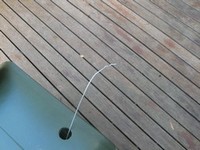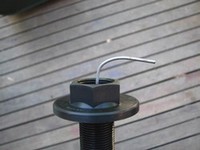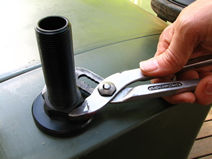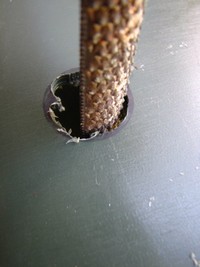First photo: Here is the fitting (the part you see is the part that will be on the inside) of the wheeliebin, but how are we to get the plastic fitting into the wheelibin?
Second photo: One way might be lay the bin on its side and crawl in. Better still is the ‘fitting-on-a-wire’ technique. Feed a piece of wire through the fitting, bend the end as in the photo, and feed the wire from the inside of the bin to the outside through the hole.
Third photo: Pull the fitting through from the outside, and fasten with a pair of large pliers or multigrips.



We’re getting close to the end off this stage. The tension and excitement build. I hope they last.
Note: I think you can use the same approach if you have to fit an outlet to a much larger tank. I did with our 1700L tank because the tank seller suggested to wait until the tank was in its final position before deciding where to put the outlet. His suggestion was spot on.



 Posted by redzircon
Posted by redzircon 

 As I do not own one of those special tools for drilling really big holes, I drilled out the hole with a medium sized drill bit. (Here’s a good page describing
As I do not own one of those special tools for drilling really big holes, I drilled out the hole with a medium sized drill bit. (Here’s a good page describing 